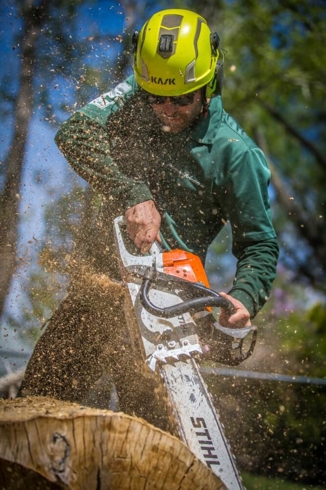
Have you ever wondered why reputable tree services and certified tree professionals make such fuzz when it comes to tree work safety and security? Ever asked yourself why it’s important to inquire about insurance coverage when hiring a tree removal company?
An Examination of the Capabilities of Certified Tree Pros Involving Tree Work Safety
An arborist’s job is a dangerous one, especially when safety precautions are not being practiced by the service provider.
There is a reason why experts only recommend certified professionals to do the work. Sure, you can cut a tree limb or prune your own tree, but are you fully aware of the dangers that come with working with trees?

Here’s the thing
Doing tree work is much more than just learning how to handle a chainsaw or knowing how to climb a tree. Any able-bodied person can climb a tree or operate a chainsaw, but that doesn’t mean they can safely and efficiently perform tree maintenance.
You see, working with trees requires a lot of knowledge, specifically with the physics and biology of trees. In addition, having technical knowledge on how to safely and properly operate the tools of the trade is also vital, as well as knowing the proper pruning and cutting techniques.
Before you decide to do your own tree maintenance work on your property, consider the following risks that are associated with tree care and removal.
Common Risks Associated with Tree Care and Removal
1. The Forces of Gravity – An arborist’s job is sometimes more dangerous than that of construction laborers’
- Anytime you’re working with trees, especially tall ones, and you’re climbing up the limbs trying to cut dead branches, the risk of falling is always present. And if you’re pruning and cutting, once that tree limb starts falling, gravity takes over and you will have no control as to where it lands.
- What’s even more dangerous is when you’re doing tree removal. Where that tree falls is up to physics and gravity. And if you don’t calculate the physics properly, you might as well be rolling dice to figure out where the tree will land.
With work like tree removal and maintenance, gravity plays a significant role. It can either be an ally or a foe that poses a serious danger to property and individuals in the vicinity.
Because construction work is known to be a dangerous job, construction laborers always follow safety protocol and wear the appropriate safety gear. The problem is, when it comes to tree maintenance and removal, some people think that it’s not that dangerous and that they can handle the job quite easily. So they do it without regard for safety. That is a huge mistake that makes the job even more dangerous.
2. The Danger of Power Lines– Arborists are sometimes more in danger than power-line installers and repairers
Most species of trees can grow several feet high when fully mature.
- In some cases, when a tree is planted in a less than ideal location such as near a lamp post or a power line, things can go bad very quickly.
There are safety procedures that tree experts follow when dealing with this kind of situation. And even with those safety protocols, working with a tree that’s near a power line is still quite dangerous. This is definitely not a job for amateurs with half-baked ideas.
Electricians working on power lines use the right tools and wear the appropriate gear. Some tree service providers are ill-equipped to deal with such conditions, making their job harder and a lot more dangerous.
3. The Hazards of Decaying Wood – Arborists can sometimes end up in more danger than roofers.
For a layperson, it’s much harder to spot a tree that’s dying or already dead. A healthy tree can look dead when it’s merely going into hibernation. This is why a lot of homeowners often get surprised when a tree in their property suddenly collapses.
- When a tree is dying, the decay typically starts from the inside.
- Sometimes there are no visible signs that tell you about the true condition of the tree, making the removal job that much more dangerous.
Roofers deal with the risk of falling or heat stroke during the summer.
- Arborists have to deal with height, falling debris, and the risk of a tree collapsing without warning.
Even with the right equipment and gear, decaying wood presents a creeping danger that is hard to prepare for.










